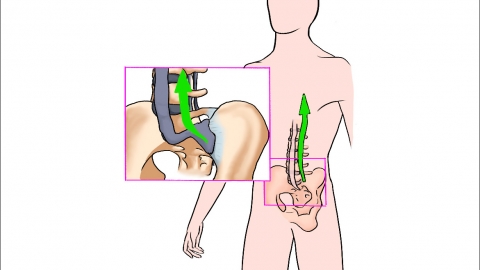What are the early symptoms of ankylosing spondylitis?
In general, ankylosing spondylitis presents various typical symptoms in its early stage, including lower back pain, morning stiffness, sacroiliac joint discomfort, peripheral joint swelling and pain, fatigue. Detailed analysis is as follows:

1. Lower Back Pain
The pain usually worsens at night or during rest and improves with activity. This occurs because inflammation irritates the tissues surrounding the spine; inflammatory factors tend to accumulate during rest, while circulation improves with movement, dispersing the inflammatory factors and relieving the pain. The pain is often described as dull or aching and may gradually worsen, affecting daily activities, thus requiring attention.
2. Morning Stiffness
Upon waking, patients may feel stiffness in the spine, with limited flexibility. This generally lasts for several hours and improves with movement. This symptom occurs because the spine remains immobile for a prolonged period overnight, and tissue adhesions caused by inflammation are not relieved until movement helps loosen them. Morning stiffness is one of the more typical early symptoms.
3. Sacroiliac Joint Discomfort
The sacroiliac joints are located on both sides of the lower back. In early stages, there may be sensations of soreness, dull pain, or tenderness. The discomfort becomes particularly evident when pressing on the sacroiliac area. Inflammation initially attacks the sacroiliac joints, causing congestion and edema in surrounding tissues, leading to discomfort. If not promptly addressed, this may progress to structural changes in the joint.
4. Peripheral Joint Swelling and Pain
Peripheral joints such as the knees, ankles, and shoulders are commonly affected, presenting with swelling and pain that worsens with movement. Inflammation can spread to these peripheral joints, causing synovial congestion and fluid accumulation, damaging surrounding tissues and impairing normal joint function. Some patients may experience limited joint mobility.
5. Fatigue
Patients often feel tired and weak, with symptoms persisting even after rest. Chronic inflammation caused by the disease consumes physical energy and affects normal metabolism. Additionally, symptoms such as pain and discomfort further burden the body, leading to fatigue.
In addition, some patients may experience mild fever or reduced appetite in the early stages. If multiple symptoms mentioned above appear, timely medical evaluation is necessary for early diagnosis and appropriate intervention.




